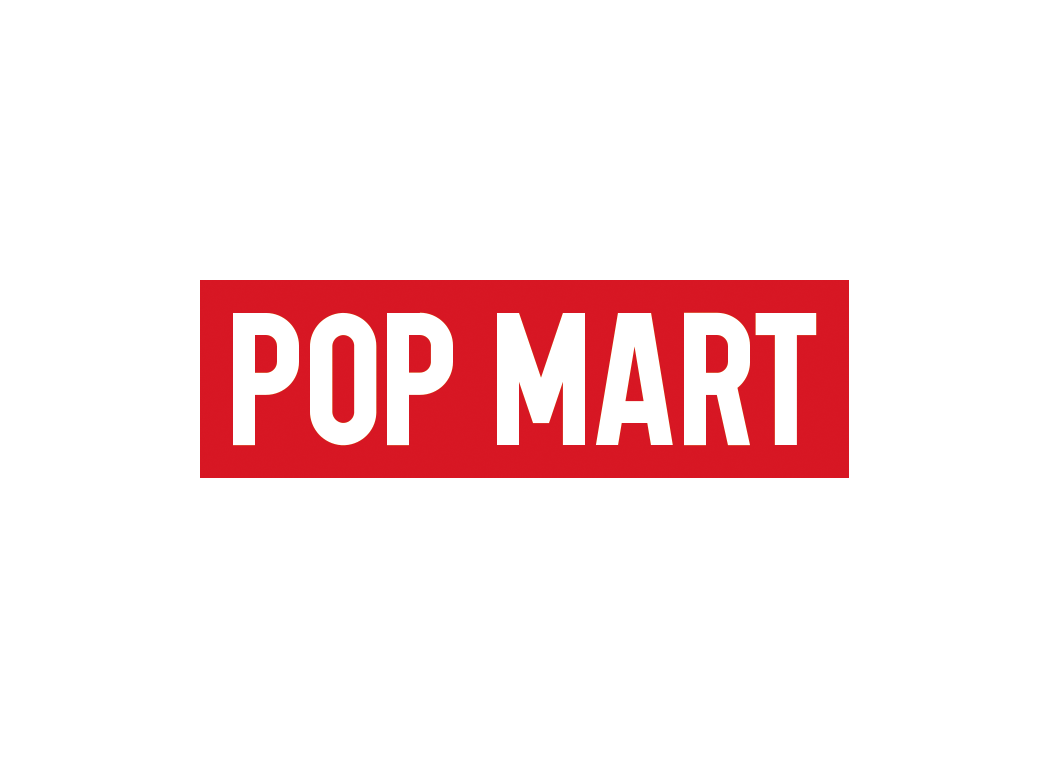POP MART(09992)
Search documents
港股异动丨泡泡玛特一度涨近3%,LVMH高管吴越加入董事会获大摩唱好
Ge Long Hui· 2025-12-11 04:03
泡泡玛特(9992.HK)早盘一度涨近3%,最高触及195.7港元。 消息面上,摩根士丹利最新发布的研报认为,吴越加入泡泡玛特董事会意味着公司过去两年的成功为发 展新业务赢得了更多资源,也意味着公司旗下IP在时尚和娱乐领域获得了高度认可,这增强了其对于泡 泡玛特有能力部署具有影响力的营销和产品资源的信心。摩根士丹利还强调,吴越在LVMH超过20年的 丰富经验,将在人才挖掘培养、时尚珠宝领域、全球黄金门店选址等方面为泡泡玛特提供有效经验。该 行将泡泡玛特列为首选股之一,评级"增持",目标价为325港元。 ...
港股异动丨LVMH高管加入,泡泡玛特涨近3%
Ge Long Hui A P P· 2025-12-11 02:56
格隆汇12月11日|泡泡玛特(9992.HK)今日股价上涨,盘初涨近3%报195.7港元。 消息面上,公司昨晚宣布,吴越已获委任为公司非执行董事,自2025年12月10日起生效。据介绍,吴越 先生现年69岁,于1984年5月获得加拿大约克大学国际关系与人文科学学士学位,并于1989年11月获得 加拿大约克大学舒立克商学院国际商务与市场营销硕士学位。 1993年至2000年2月,吴越担任LVMH集团旗下Parfums Christian Dior品牌总经理及董事总经理,负责其 在中国的业务;2000年2月至2005年10月,担任索尼国际音乐娱乐集团亚洲区副总裁,负责其在中国的 业务;自2005年11月起,担任LVMH大中华区集团总裁,负责监督LVMH多品牌组合在中国市场的业 务。 有业内人士指出,吴越加入泡泡玛特董事会是对品牌的一次背书,这意味着泡泡玛特正融入国际时尚潮 流核心圈层。 ...
LV大中华区总裁吴越将任泡泡玛特非执行董事

Cai Jing Wang· 2025-12-11 02:38
【#LV高管吴越加入泡泡玛特董事会#】12月10日,泡泡玛特在港交所公告,何愚因其他工作安排已辞 任非执行董事,吴越已获委任为公司非执行董事,自2025年12月10日起生效。 吴越,69岁,自2005年11月起担任LVMH大中华区集团总裁,负责监督LVMH多品牌组合在中国市场的 业务。 在此之前,他曾于2000年2月至2005年10月担任索尼国际音乐娱乐集团亚洲区副总裁,负责其在中国的 业务;及于1993年8月至2000年2月担任LVMH集团旗下Parfums Christian Dior品牌的总经理及董事总经 理,负责其在中国的业务。(界面) #LV大中华区总裁加入泡泡玛特董事会# 香港,2025年12月10日 尖峰生先生 一一" 吳聯生先生 王寧先生 提名委員會 張建君先生(主席) 吳聯生先生 劉冉女士 ...
LVMH高管加入,泡泡玛特涨近3%

Ge Long Hui· 2025-12-11 02:32
1993年至2000年2月,吴越担任LVMH集团旗下Parfums Christian Dior品牌总经理及董事总经理,负责其 在中国的业务;2000年2月至2005年10月,担任索尼国际音乐娱乐集团亚洲区副总裁,负责其在中国的 业务;自2005年11月起,担任LVMH大中华区集团总裁,负责监督LVMH多品牌组合在中国市场的业 务。 有业内人士指出,吴越加入泡泡玛特董事会是对品牌的一次背书,这意味着泡泡玛特正融入国际时尚潮 流核心圈层。 12月11日,泡泡玛特(9992.HK)今日股价上涨,盘初涨近3%报195.7港元。 股票频道更多独家策划、专家专栏,免费查阅>> 消息面上,公司昨晚宣布,吴越已获委任为公司非执行董事,自2025年12月10日起生效。据介绍,吴越 先生现年69岁,于1984年5月获得加拿大约克大学国际关系与人文科学学士学位,并于1989年11月获得 加拿大约克大学舒立克商学院国际商务与市场营销硕士学位。 责任编辑:栎树 ...
泡泡玛特开盘涨近3% 刚刚官宣LVMH大中华区总裁吴越加入董事会

Zhi Tong Cai Jing· 2025-12-11 02:15
12月11日早间港股开盘,泡泡玛特(09992)涨近3%,截至发稿每股报价195港元。就在10日收盘后,泡泡 玛特曾发公告,宣布LVMH大中华区总裁吴越加入泡泡玛特董事会,成为非执行董事成员之一。 ...
泡泡玛特(09992)开盘涨近3% 刚刚官宣LVMH大中华区总裁吴越加入董事会
智通财经网· 2025-12-11 02:13
智通财经APP获悉,12月11日早间港股开盘,泡泡玛特(09992)涨近3%,截至发稿每股报价195港元。就 在10日收盘后,泡泡玛特曾发公告,宣布LVMH大中华区总裁吴越加入泡泡玛特董事会,成为非执行董 事成员之一。 ...
港股高开,科网股多数上涨
第一财经· 2025-12-11 01:45
Market Overview - The Hang Seng Index opened up by 0.66% at 25,710.61 points, while the Hang Seng Tech Index rose by 0.55% to 5,611.93 points [1][2]. Sector Performance - The Hang Seng Biotechnology Index increased by 0.44% to 15,159.39 points, and the Hang Seng China Enterprises Index gained 0.58% to 9,006.27 points [2]. - The Hang Seng Composite Index saw a rise of 0.71%, reaching 3,940.90 points [2]. Notable Stocks - Stocks such as Pop Mart, Zijin Mining, and HSBC opened with gains exceeding 2% [2]. - Tech stocks showed strength, with companies like NetEase, Alibaba, and Bilibili all rising over 1% [3]. Individual Stock Movements - Kingdee International rose by 2.00% to 14.250, while Midea Group increased by 1.63% to 90.450 [4]. - Alibaba's stock price reached 155.000, reflecting a 1.17% increase, and NetEase rose to 213.200, up by 1.14% [4]. - Other notable movements included Tencent Holdings at 609.000 (+1.00%) and BYD Company at 98.400 (+0.66%) [4].
摩根士丹利:泡泡玛特董事会新增时尚界商业领袖 料提升Labubu吸引力
Jin Rong Jie· 2025-12-11 01:31
本文源自:金融界AI电报 泡泡玛特周三盘后公告委任LVMH大中华区集团总裁吴越为非执行董事。摩根士丹利称,此举强化了该 行对公司能够运用强大营销与产品资源,提升Labubu吸引力的信心。分析师Dustin Wei等人在报告中表 示,市场对Labubu及泡泡玛特增长的可持续性有所担忧,但这一任命传递出不同的信号。泡泡玛特与 重量级商业领袖的不断合作,凸显其IP在时尚与娱乐界的高度认可。鉴于吴越在LVMH大中华区长达20 年的经验,他可能在人才、高价值会员体系、推动泡泡玛特进军时尚珠宝领域等方面贡献力量。 ...
泡泡玛特遭做空,市值蒸发超2000亿,“出海”红利阶段性结束
Sou Hu Cai Jing· 2025-12-11 00:55
Labubu在欧美,获得很多国际明星的青睐,一跃成为了全球爆款,一些限定款或者联名款甚至卖出了成千上万的天价。 在这种背景下,泡泡玛特掌舵人王宁不仅成功"破圈",还得到了名利加持。 资本市场的故事一直都在轮番上演,风口之上头部企业,几年内就能完成蜕变。 当热潮散去,曾经展望的未来都变成了泡影,业绩才是最终的归途。 进入2024年下半年之后,泡泡玛特、老铺黄金成为了港股市场的新宠,在市场的加持下,泡泡玛特创出了历史的新高。巅峰时期,其掌舵人王宁以超过280 亿美元的身家,超越牧原股份创始人秦英林成为"河南新首富"。 作为全球年轻消费群体新的"社交货币",大多数年轻人都把拥有一个Labubu作为社交新手段时,泡泡玛特的盲盒困境就顺利被打破,这也预示着该公司顺利 的走过了野蛮生长阶段,正式的成为了一家全球具有影响力的IP公司。 出海的成功,加上全球年轻市场的青睐,泡泡玛特重新被资本市场定义。于是泡泡玛特的股价一路突破100港元、200港元、300港元,最高位时,泡泡玛特 的总市值一度突破4500亿港元。 疯狂的市场定价,让泡泡玛特的核心投资人屠铮也非常不淡定。到今年5月,屠铮几乎清仓式减持了泡泡玛特。值得注意的是, ...
智通港股通持股解析|12月11日
智通财经网· 2025-12-11 00:32
| 公司名称 | 持股额变动 | 持股数变动 | | --- | --- | --- | | 小米集团-W(01810) | +43.23亿元 | +10346.72万股 | | 盈富基金(02800) | +29.93亿元 | +11644.65万股 | | 零跑汽车(09863) | +10.16亿元 | +2051.66万股 | | 招商银行(03968) | +8.21亿元 | +1629.80万股 | | 比亚迪股份(01211) | +7.60亿元 | +777.90万股 | | 美团-W(03690) | +6.14亿元 | +613.64万股 | | 泡泡玛特(09992) | +5.06亿元 | +265.63万股 | | 恆生中国企业(02828) | +4.77亿元 | +520.34万股 | | 康方生物(09926) | +4.53亿元 | +387.80万股 | | 商汤-W(00020) | +3.89亿元 | +18009.70万股 | 3、港股通最近5个交易日减持榜(前10名) | 公司名称 | 持股额变动 | 持股数变动 | | --- | --- | --- | | 腾讯 ...


